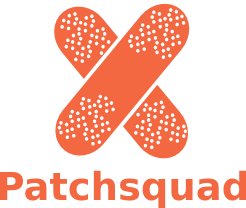This GUADEC brought a lot of momentum to GNOME: fresh new ideas and nice discussions and plans about our future platform and desktop. For the first time in the last 2 years, I have the strong feeling that GNOME is about to switch to a “revolutions mode”. This means that several small and big revolutionary things will start to bubble inside the project from now on. I’m really excited about it! (Obviously, I’m not saying that nothing interesting happened before this GUADEC. It’s just that now I see more cohesion around some goals inside community.)
The Online Desktop
The Online Desktop is something that, if done right, can bring a big and positive impact on the GNOME user experience. What I like about this idea:
- It takes advantage of the whole world of cool web services out there
- It makes the GNOME Desktop much more fun (I remember Vincent commented about it 2 years ago… He is totally right!)
- Consequently, it brings GNOME much closer to the user who uses the computer to strengthen his/her social and emotional ties
I don’t think we should work on an “online mode” (with a special UI) for GNOME Desktop though. IMO, the way to go is to turn GNOME into a “web-aware” desktop environment. some examples:
- If you’re viewing some photos or watching a video, it should be easy and seamless to upload them to your favorite photo/video sharing web service
- It should be natural to keep track of what your friends are doing on web (what Mugshot does)
- When you import some photos from your camera, it should be possible to upload them straight away to the web
Bringing web-awareness to GNOME involves creating a basic platform (mostly a set of D-Bus services and GTK+ widgets) that could be shared by any desktop component who wants to be web-aware. This way those bits can be used on GNOME Mobile as well.
We should not limit ourselves on the data sharing on web services because, in essence, what we want (as users) is to share media with other people. We should consider having an integrated communication framework as part of the Online Desktop effort. Some examples:
- If you’re viewing some photos or watching a video, it should be easy and seamless to share them with one or two friends (via messenger, e-mail, local network share, etc). If your friends are online you can simply start chatting with them after you shared something with them. Something like Web Swarm (in Mugshot) does for links but for any shared media
- There should be some central place to start communicating with someone. it doesn’t matter if it’s via e-mail, messenger or whatever else
- It should be easy to make collaborative work on the same content (documents and media). OLPC is doing a great job on this subject
We already have a lot of code available for covering some of those use cases. Some of them: Conduit for easy syncing with web services, Empathy and Mission Control for a Telepathy-based integrated communication in the desktop, Mugshot (server and client) stack for web services activities tracking, Soylent for “people browsing”, and so on. There will be this big effort to add the “online” bits to applications and other desktop components.
“Bling!” on GNOME
There were some nice talks about adding more “Bling!” to GNOME. It was nice to see things like Clutter, Lowfat, GTK+ 3.0 (oops, 4.0!) discussions, compositing, etc. There two things I’d like comment on:
- We have this challenge of making GNOME sexier. Ok, cool! But let’s keep this in mind though: we should not make GNOME unusable on a computer without 3D acceleration. At the same time that we want to impress the user with cool effects (which should improve the usability btw), we need keep in mind that there are lots of people using low-power/old computers with GNOME on social projects out there (Brazil has many of those).
- In order to bring “Bling!” to GNOME in a consistent way, those bits should be in the platform level with components that could be easily reused among applications. Also, we would need to have clear guidelines in HIG. Otherwise we’ll end up in a “Bling!” hell!
GNOME Platform
It was nice to see that important changes are about to come in our platform. Most of them I’ve already commented before: GVFS, GTK+ 3.0, New applet API, GSettings, Mallard and others. Next year will be really nice for GNOME Platform!
People
- Danilo, Andreas, Vincent and Etrunko: you made my GUADEC much more fun! Thanks!
- Claudio, Pedro and Fernando: it’s always nice to meet you!
- Diego, thanks for the scarf! It will be very useful here in Finland!
That’s GNOME: a bunch of extremely talented and generous people working on the common goal of creating free, easy-to-use, and innovative technologies to everyone!
